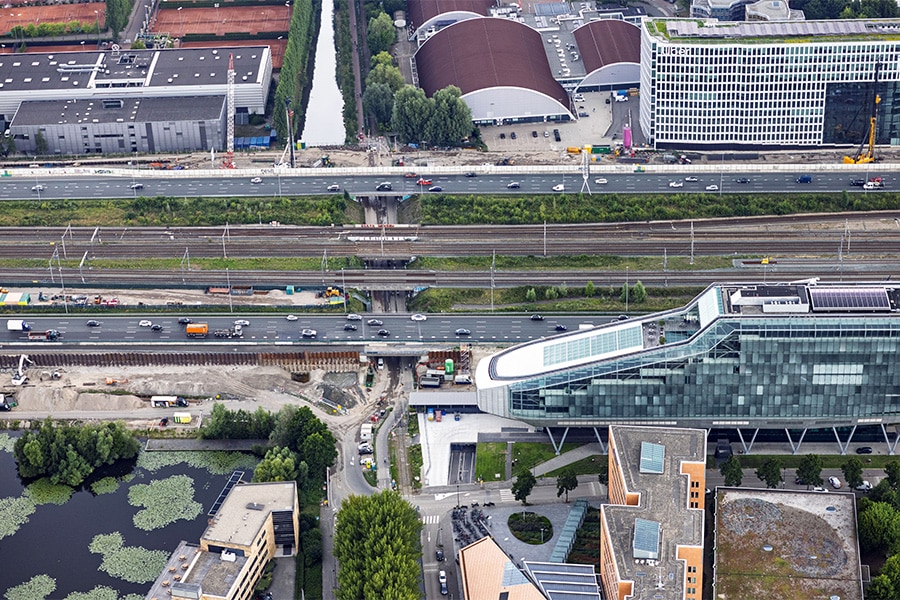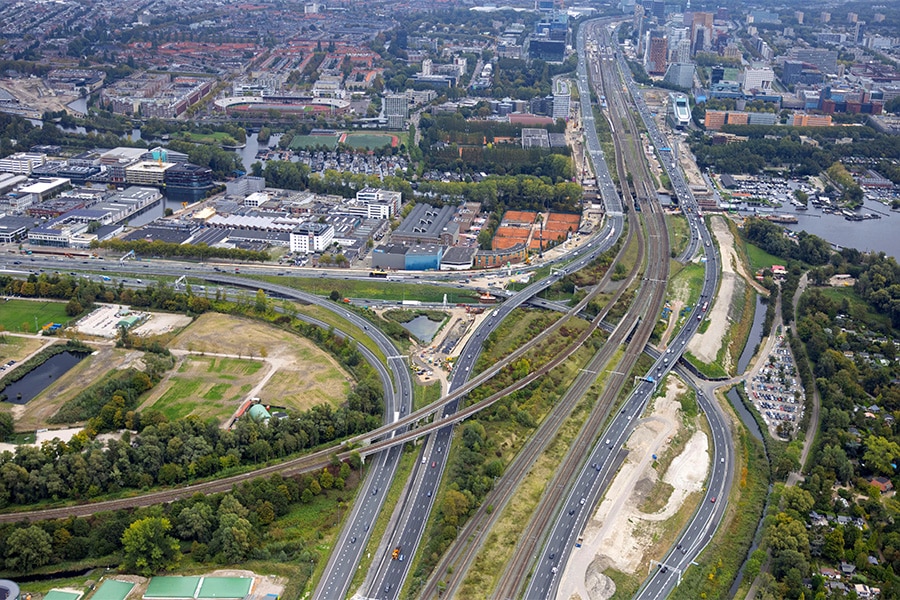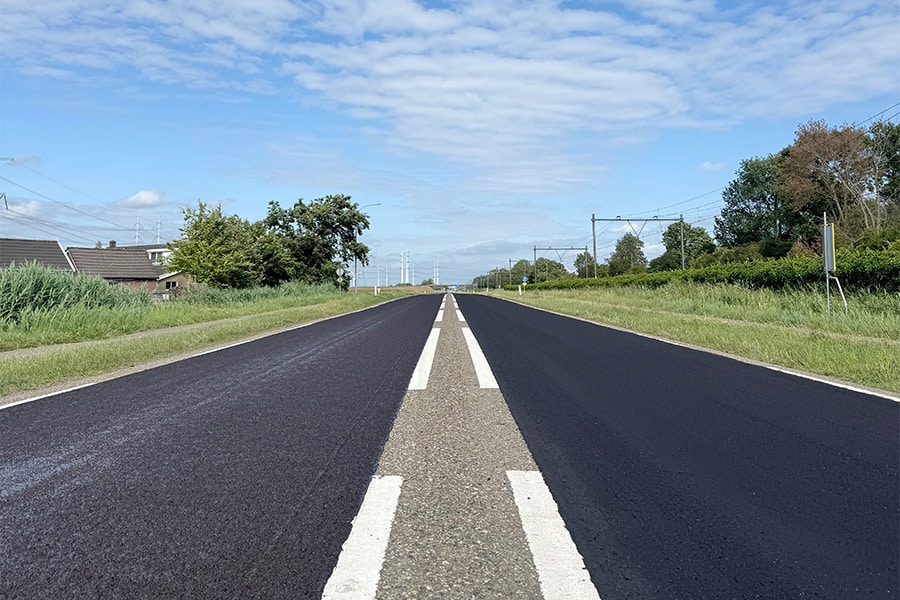
Specialist in rail-related foundation work deployed to repair embankment Wormerveer
Such was the case with this project in Wormerveer, where Kandt installed a steel sheet pile wall over a length of 150 meters at a location that was difficult to reach. On behalf of main contractor K_Dekker bouw &infra, ProRail repaired and stabilized the track body and embankment alongside the track, after which the track was put back into use.
"In itself, installing sheet piling is regular work for our company," says Bastiaan Verheul, project manager at Kandt. "But here it is a little bit different than usual. The limited space outside the rail strip, the fact that the work site can only be reached by rail and the time pressure of the planned decommissioning make it challenging. But our approach, knowledge and expertise combined with our specific machinery fit in seamlessly."

Good preparation is half the battle
"Every project is unique in terms of situation, complexity and challenges. But we always offer an appropriate solution. Good preparation is essential for this," Verheul continued. "During the tendering phase, we contributed ideas on how best to approach this project. By identifying the risks at an early stage and thinking along in solutions, you benefit from this at a later stage of the process." So the site was carefully mapped out, well thought-out plans were made, a work site was built and the logistics around it worked out. "Especially there was a challenge there," says Verheul. "That's where our experience in rail works came in handy."
Everything by rail
"During the period leading up to the decommissioning, both main contractor K_Dekker, and Kandt's team were fully engaged in preparatory work. A deployment site was created 900 meters away from the work site at an existing level crossing, from which the work site could be reached by rail. The approach/discharge route ran partly along a passenger platform of a station. At the work site there was a ditch on one side of the railroad embankment with dense buildings behind it and a meadow on the other side of the railroad embankment, which was not accessible. The required materials and equipment were transported from the deployment site by rail during a train-free period. We have our own rail equipment available for that."

Safe and smooth
The work took place during a 104-hour out-of-service period in late February. "That sounds like a relatively long train-free period," says Verheul, "but it is crucial that the work of the various disciplines that follow each other does not affect each other. Then you ask quite a lot of man and machine, if they have to work for such a long time in succession. The equipment must also be geared to this. Kandt's KSC926 is a specific machine, which could be transported from the deployment site to the work site with its own railroad equipment. "Despite the limited physical space and the steep slope, the sheet piling could be installed smoothly, efficiently and responsibly." Verheul says the good mutual cooperation contributed to the final result. "Everyone on the job site, from ProRail and main contractor K_Dekker to the other subcontractors and stakeholders such as cable and pipeline operator, the excavator and catenary crew, worked together constructively. Each contributed the necessary expertise from their own specialism." Verheul concludes, "It's nice to see how during an outage a common goal is pursued and the willingness to help each other is greater than normal. That way you can do what needs to be done within time and budget and arrive at a beautiful end result that we can all be proud of."




